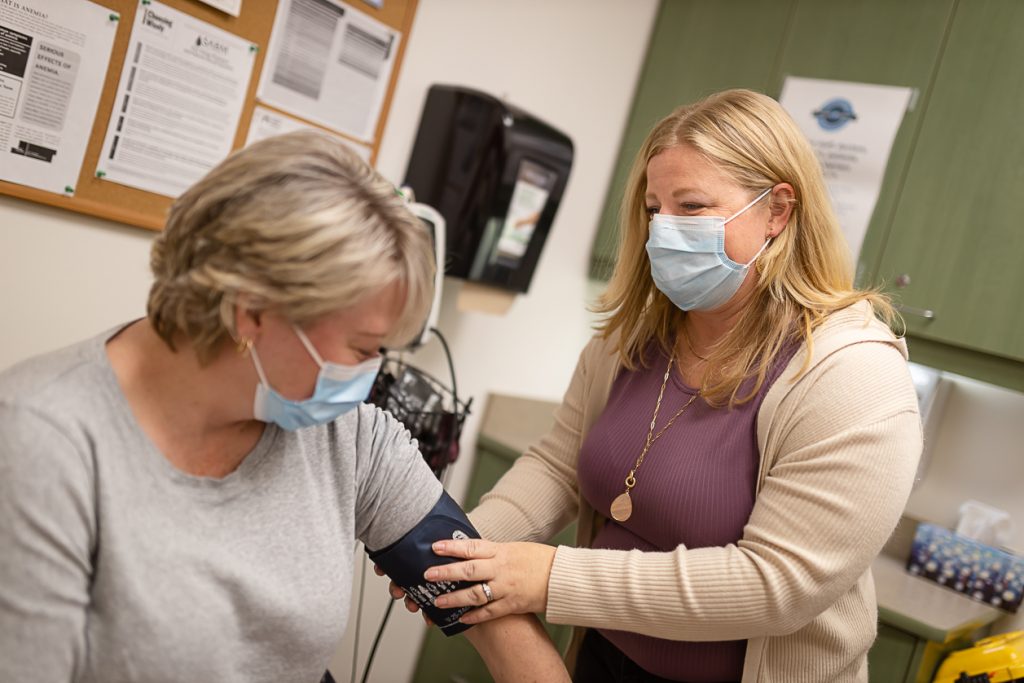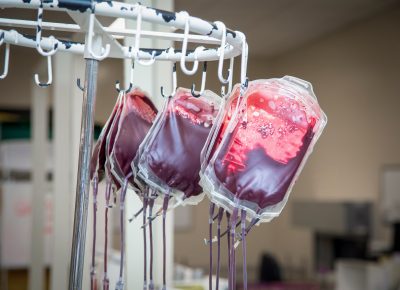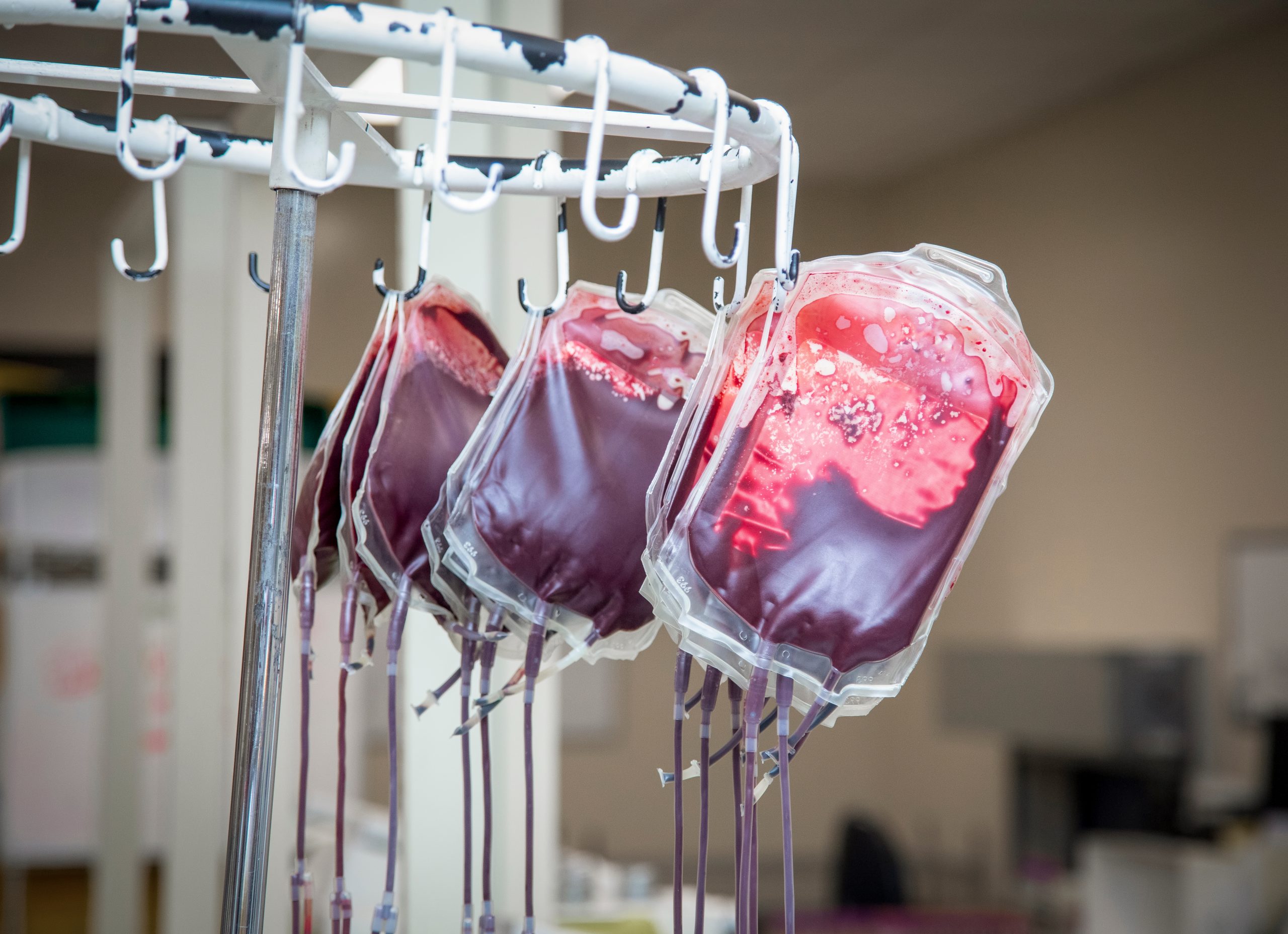
Introducing a blood conservation coordinator
Christa Chernesky is on a mission to tell people about her role as Hamilton Health Sciences (HHS)’ blood conservation coordinator.
Just like it sounds, her goal is to try and reduce the number of hospital blood transfusions during and after surgery, and conserve donated blood as a precious resource.
“Staff and patient education is a big part of my focus,” says the registered nurse based at HHS’ West End Clinic/Urgent Care Centre. Her position as the hospital’s blood conservation coordinator is funded through the province’s Ontario Transfusion Coordinators (ONTraC) program.
“It’s really about optimizing the patient’s own blood so that a transfusion isn’t required.”
The program’s goal is to identify patients with anemia (caused by low iron levels) before surgery and treat them with iron supplements so they won’t need a transfusion of donated blood during or after surgery. At HHS, the focus is on cardiac patients who are booked for major planned surgeries. Chernesky is currently working to expand the program to all HHS sites, starting with Juravinski Hospital for certain cancer patients.
“Cardiac and oncology departments are among our largest users of blood products during surgery,” she says.
Preventing anemia to save blood products
Chernesky works with doctors and nurses to identify patients who may be anemic, and offers these patients further testing and the opportunity to take oral iron supplements, or in some cases intravenous infusions, to bolster their iron levels before surgery.

Christa Chernesky, HHS blood conservation coordinator
“It’s really about optimizing the patient’s own blood so that a transfusion isn’t required,” says Chernesky. “This would help reduce blood transfusions and save donated blood for patients who need it most, such as trauma patients arriving at the emergency department.”
HHS is one of 23 Ontario hospitals with a staff member in this role. These hospitals represent about 70 per cent of blood used provincially.
While the ONTraC program has been around for 20 years, it’s not well-known, says Chernesky, who took on the coordinator’s position in June after 14 years of nursing at HHS.
“When I told my colleagues about my new job, many didn’t even realize this position existed,” says Chernesky. “I’m hoping to change that by promoting the ONTraC program to staff, physicians and patients with the goal of expanding it as a best practice.”
Blood conservation is an evidence-based approach to transfusion medicine, meaning that it’s based on scientific evidence. It’s endorsed by the World Health Organization and represents an international initiative and best practice in promoting bloodless medicine.
“Blood is basically a liquid organ, and while transfusions using donated blood are generally considered safe, there are some risks.”
Chernesky works with other health-care professionals including blood transfusion team members, doctors and nurses to promote alternatives for certain surgical patients. These patients are at higher risk of needing a blood transfusion during or after their operation, mostly because their anemia went undiagnosed or untreated.
What is anemia?
Anemia is a late sign of iron deficiency, and leaves people feeling tired, having heart palpitations and being short of breath. Anemia happens when a person doesn’t have enough red blood cells, which carry oxygen from the lungs to tissues and cells. The body needs oxygen in order to survive, so having anemia increases the risk of needing a blood transfusion during or after surgery.

“In order to protect your brain, heart and organs, you’ll need more oxygen so the surgical team will need to transfuse you if your blood cells aren’t carrying enough to start off with,” says Chernesky, who predicts more cases of anemia as the cost of living and food continues to rise.
Fewer blood donations available
“Blood is basically a liquid organ, and while transfusions using donated blood are generally considered safe, there are some risks,” says Chernesky. “About one in 100 people will have a mild reaction such as a rash or fever. About one in 1,000 will have a more serious reaction that could be life-threatening.”
Reducing the number of transfusions helps manage blood supply shortages, especially with the pandemic when fewer people are donating, says Chernesky, who would eventually like to see an organized screening program in place to test all surgical patients for anemia.
“It would be better for patients, surgical teams and the health-care system too,” she says. “While implementing a screening program would be costly, there are much greater costs involved with blood transfusions including longer hospital stays, greater risk of infection, and increased mortality.”


